The tickets covers 2 sites: the main museum (Pit 1/2/3) and Lishan Park (Bronze Chariots exhibition at the Emperor's Mausoleum), 1.5 km in between, and connected by free shuttle bus.
Most visitors will finish the main museum only, however you can explore further to the Bronze Chariots if time permits. You will visit Pit 1, 3, 2 respectively by the order of location, and spend 2-3 hours. Additional 1.5 hours is planned for the Bronze Chariots.
The Terracotta Warriors in Xi’an, China, are a must-visit destination for travelers seeking a glimpse into ancient Chinese history. A UNESCO World Heritage site, this incredible discovery ranks among China’s top attractions, alongside the Great Wall.
Unearthed in 1974 by local farmers, the Terracotta Army was built to accompany China’s first emperor, Qin Shi Huang, in the afterlife. The site contains over 8,000 life-sized soldiers, each uniquely crafted with distinct expressions, attire, and weaponry. This stunning archaeological marvel reflects the military power and artistic brilliance of the Qin Dynasty (221–206 BC).
Visitors can explore three main excavation pits, each revealing different formations of warriors. Pit 1, the largest, showcases thousands of soldiers standing in battle-ready formation. The meticulous details and faded colors hint at the grandeur they once displayed. Beyond the warriors, the museum features fascinating artifacts, including bronze chariots, ancient weapons, and relics that provide insight into the emperor’s time.
A visit to the Terracotta Warriors is more than an encounter with history—it’s a journey back in time. Guided tours offer deeper insights into the site’s significance, making it an enriching experience for history lovers and curious travelers alike. As you stand before these silent sentinels, you’ll gain a profound appreciation for China’s rich past and the remarkable craftsmanship that brought this army to life.
Make sure to include the Terracotta Warriors in your China itinerary. This awe-inspiring site offers an unforgettable blend of history, culture, and artistry, making it a highlight of any trip to Xi’an.
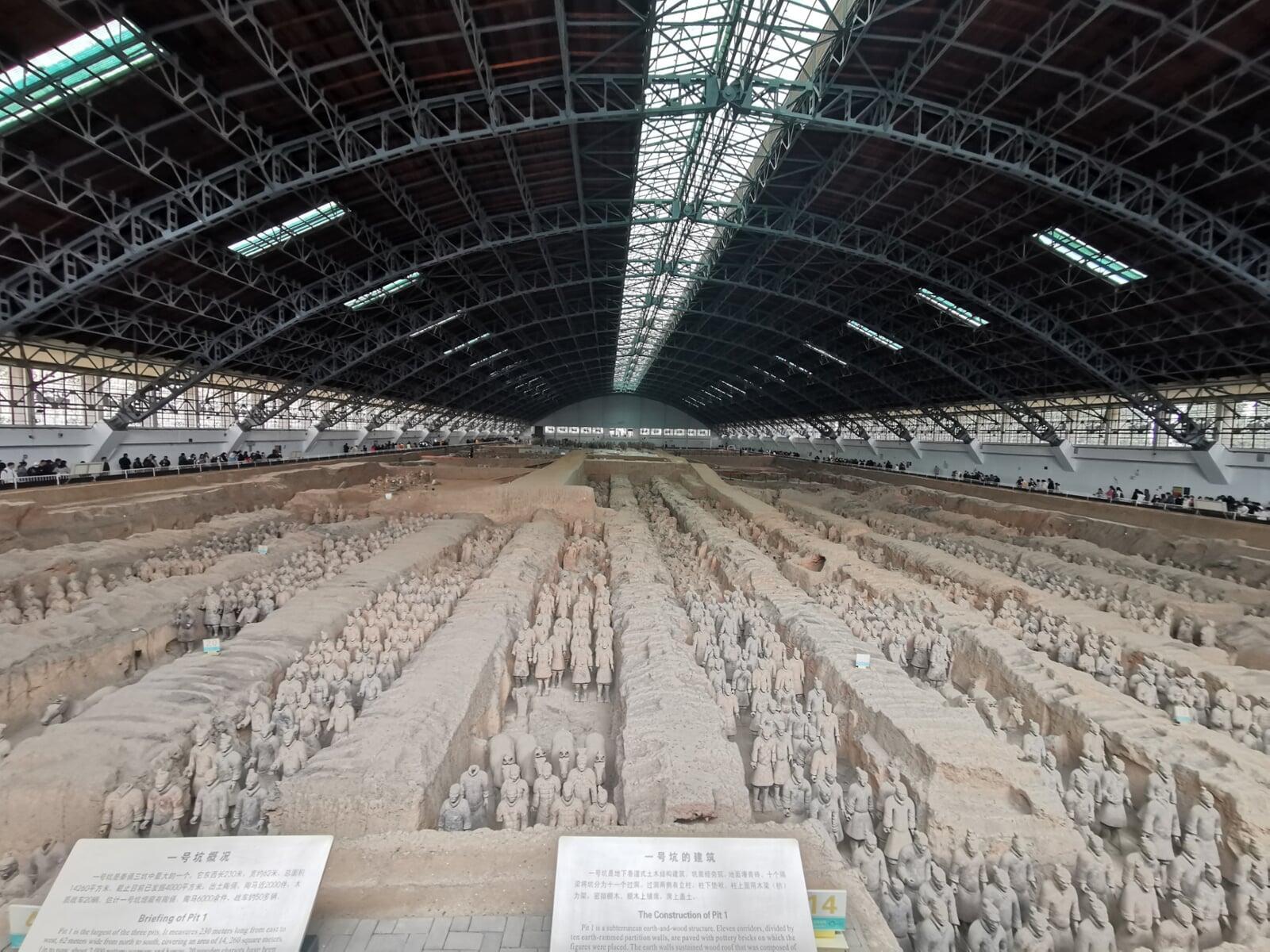
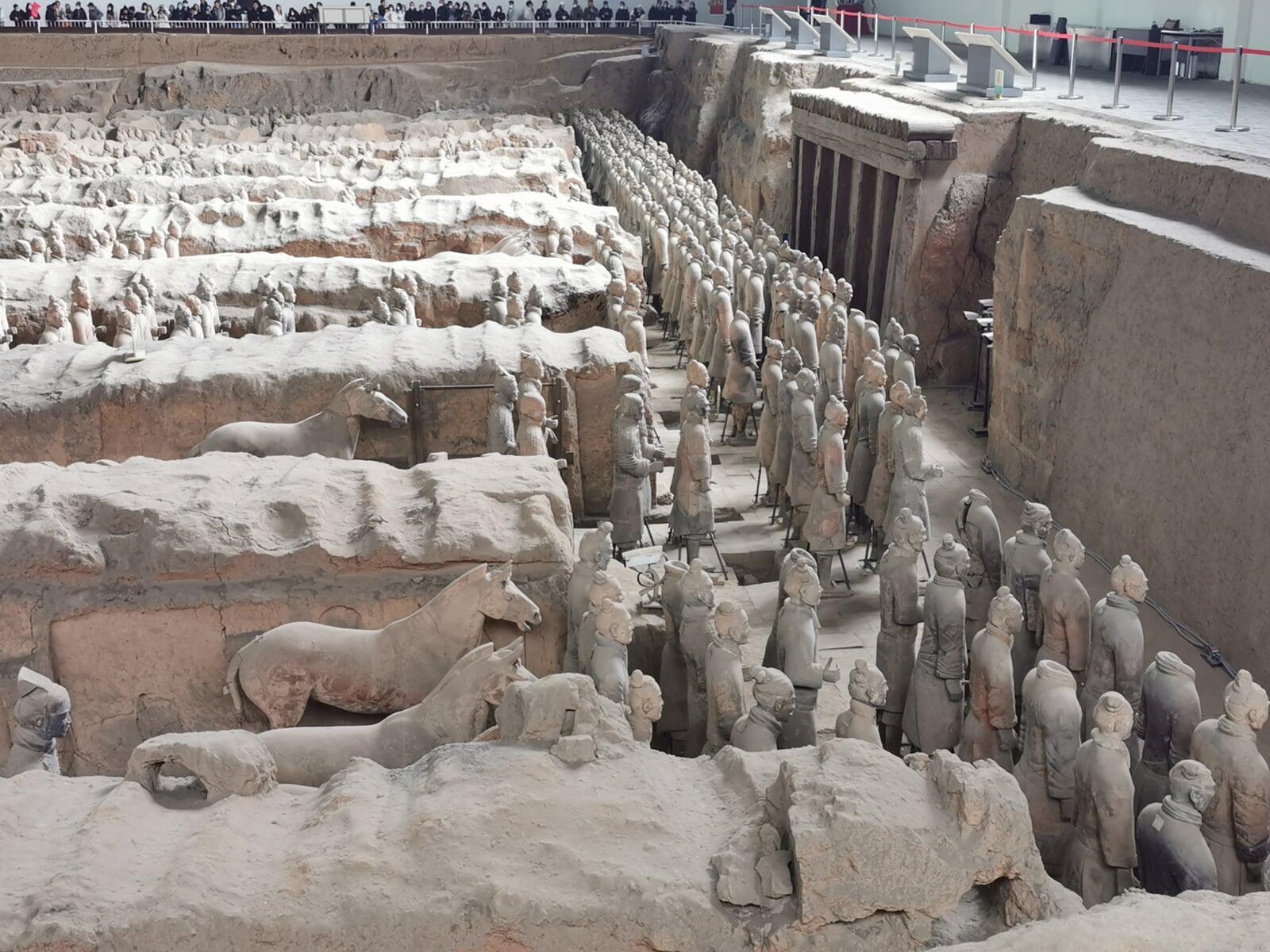
Pit No. 1
Pit No. 1 is the largest and most impressive of the three pits at the Terracotta Warriors Museum, covering approximately 14,000 square meters. Discovered first in 1974, this main pit contains around 6,000 life-sized warriors arranged in a formidable battle formation. As you enter, the sight is breathtaking—a vast army poised for action, each warrior meticulously crafted with individual features and expressions.
The figures are depicted in various ranks and roles, including infantry soldiers, archers, and officers, each equipped with authentic weapons like swords, spears, and crossbows. They stand in rows and columns, creating an illusion of depth and order, transporting visitors into the heart of a historical battlefield.
The preservation efforts undertaken in this pit are remarkable; many warriors still exhibit traces of the original pigments that adorned them, making them a striking example of ancient artistry. The state-of-the-art museum lighting enhances this experience, allowing visitors to appreciate the details and craftsmanship of the sculptures.
Accompanying the warriors, there are also chariots and horses, which provide insight into the military logistics of the Qin dynasty. Informative displays and audio guides are available, enriching the visitor's understanding of how this army was meant to protect the emperor in the afterlife. Pit No. 1 is often the highlight of the visit, captivating guests with its sheer scale and historical significance.
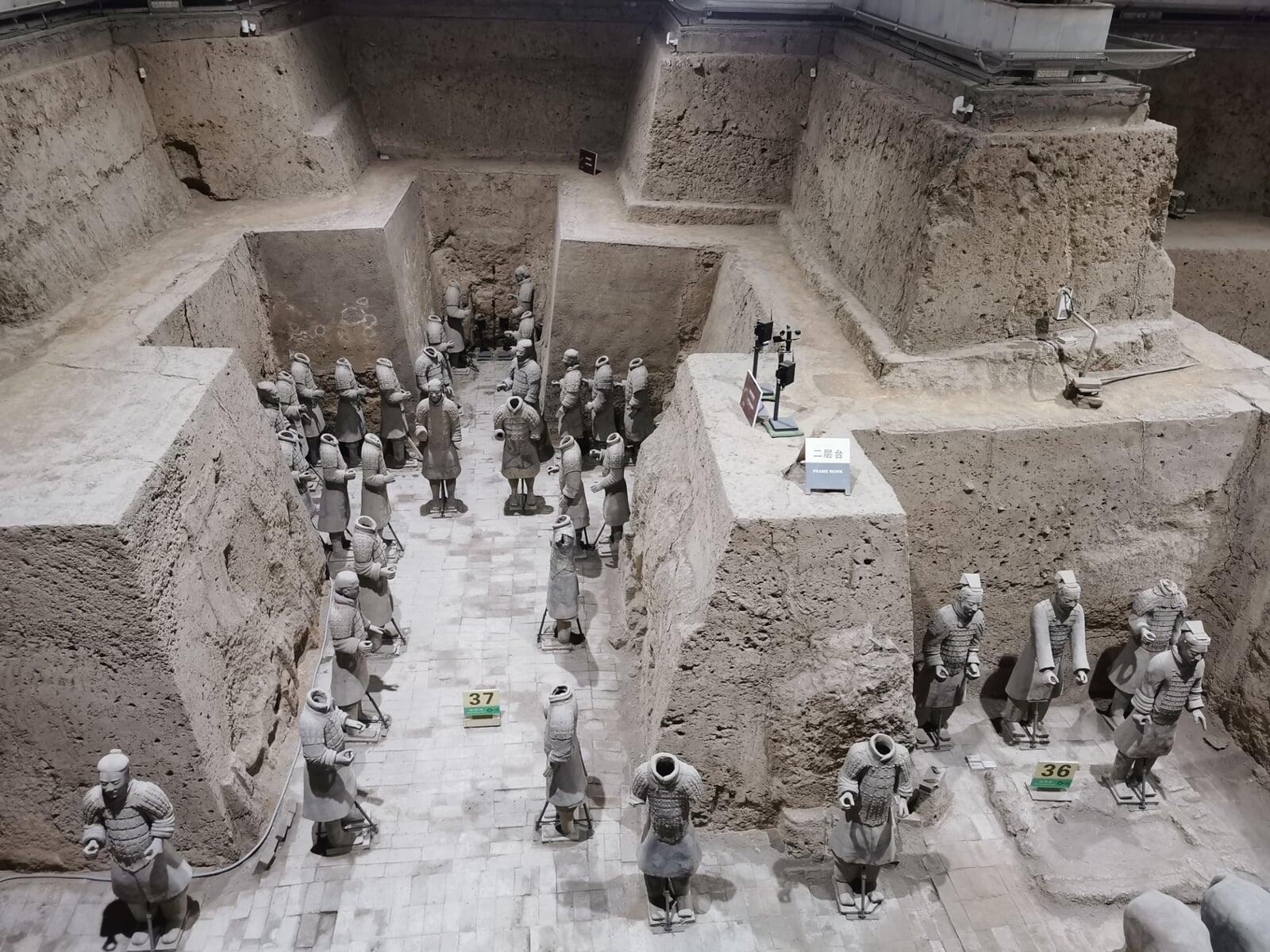
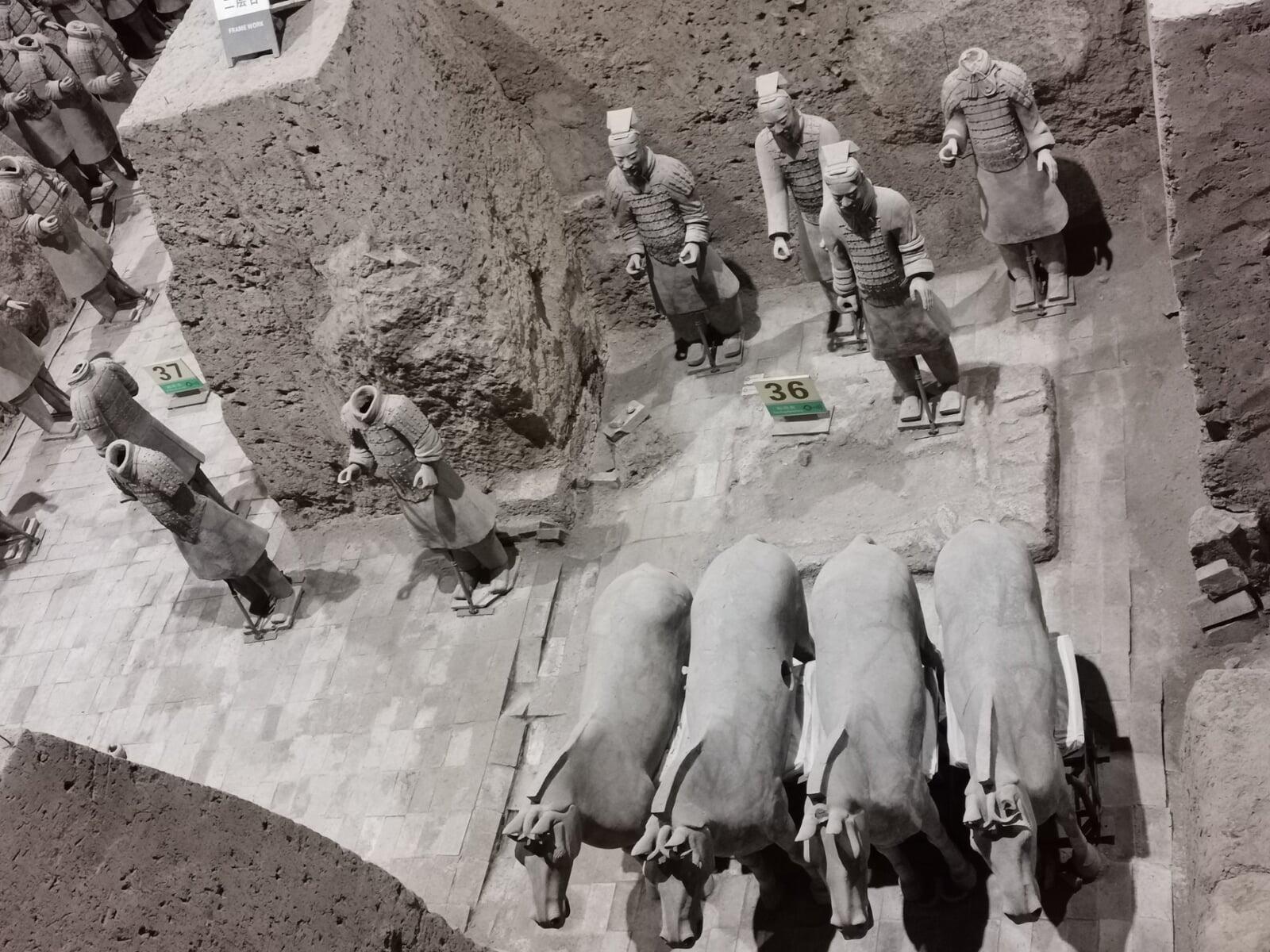
Pit No. 3
Pit No. 3 is the smallest of the three pits, but it offers a unique perspective on the function and design of the Terracotta Army. Often regarded as the command center, this pit features around 70 warriors, including high-ranking officers and their chariots, strategically positioned to indicate their leadership roles on the battlefield.
Unlike the more dense formations in the other pits, Pit No. 3 features a more open layout, which suggests a strategic placement of commanders overseeing the battlefield. Visitors can closely examine the elaborate details of the officers’ attire and weaponry, which reflects their status in the Qin military hierarchy. The emphasis on leadership and strategic command found in this pit provides a deeper understanding of the military strategies employed during the Qin dynasty.
Moreover, the ongoing research and excavation in Pit No. 3 continue to yield new findings that highlight the commanding structure of the Terracotta Army. Informational panels detail the discoveries made here and provide context about the leadership roles, imparting insights about the organizational hierarchy of ancient Chinese warfare.
The atmosphere in this pit is distinct, drawing visitors into a realm where command and strategy were key. By exploring Pit No. 3, guests gain a more profound appreciation for the intricacies of the ancient military system and the significance of these guardians in the emperor’s afterlife.
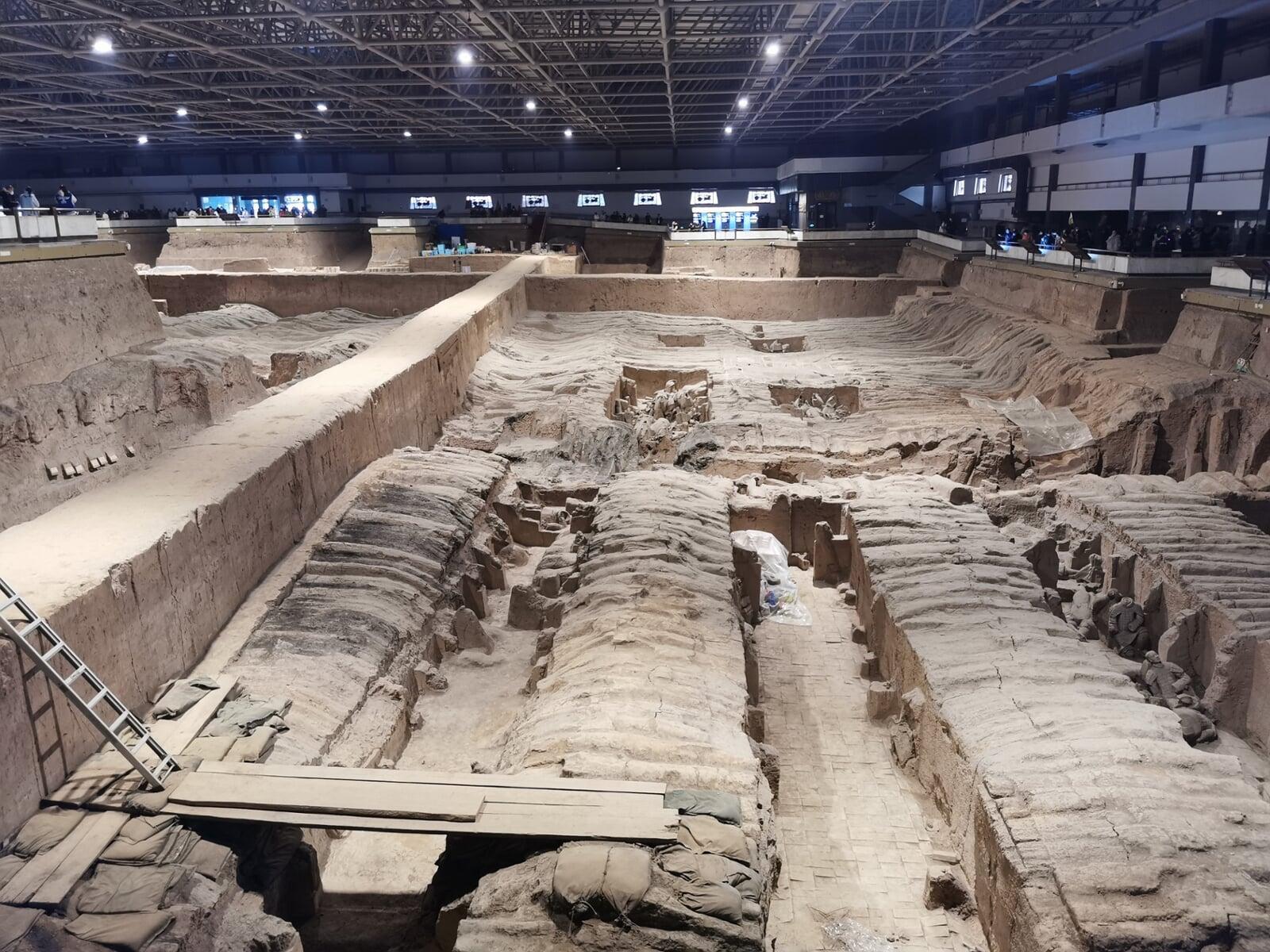
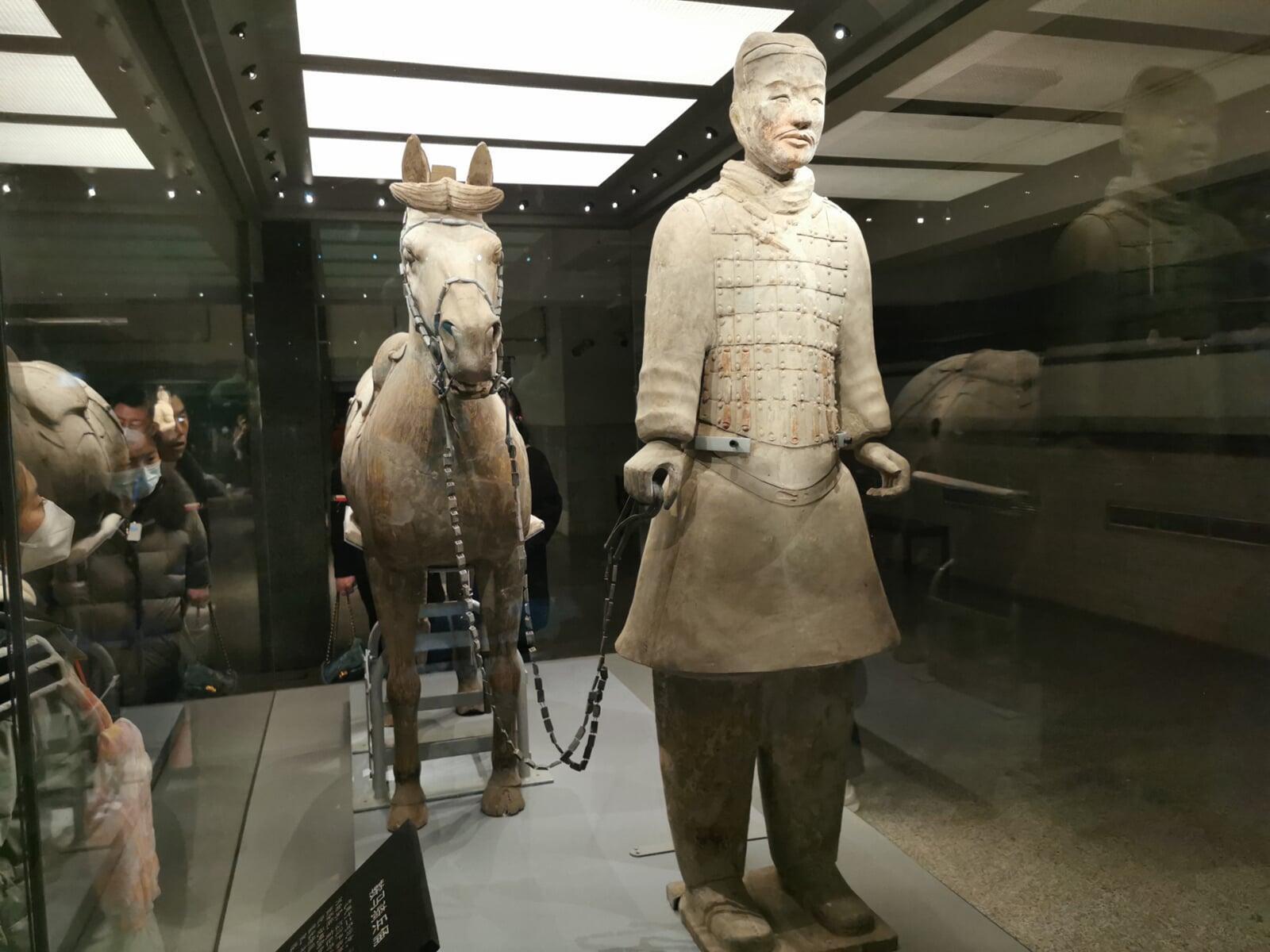
Pit No. 2
Pit No. 2 offers a fascinating glimpse into the diversity of the Terracotta Army and its strategic components. This pit is slightly smaller than Pit No. 1 but contains a wealth of interesting arrangements, including more than 1,000 warriors, horses, and chariots. Unlike the organized phalanx of Pit No. 1, the figures here are placed in a more varied formation, which suggests a tactical deployment in battle.
In Pit No. 2, visitors can observe a variety of troop types, including archers, infantry, and cavalry units, each demonstrating the Qin dynasty's military organization. The sculptures are grouped according to their roles, with dedicated sections for each troop type, giving insights into the structure of the army. The presence of chariots and distinct figures reveals the advanced warfare techniques and strategies used during the Qin era.
What’s particularly captivating about this pit is the ongoing excavations that continue to unearth new treasures, highlighting the dynamic nature of this archaeological site. Visitors can view displays about these excavations and understand the significance of recent discoveries, making the experience rich with information. The blend of historical context and continual discovery makes Pit No. 2 an essential stop for understanding the broader scope of the Terracotta Warriors.
You can keep visiting to the Bronze Chariots after the 3 pits if you're still energetic and time permits. There's no additional cost as the entrance and shuttle bus are all included in the ticket. However you need pay CNY15 for the golf car transfer as the mausoleum is huge and massive.

Shuttle bus station is located at the opposite of the Emperor Stature
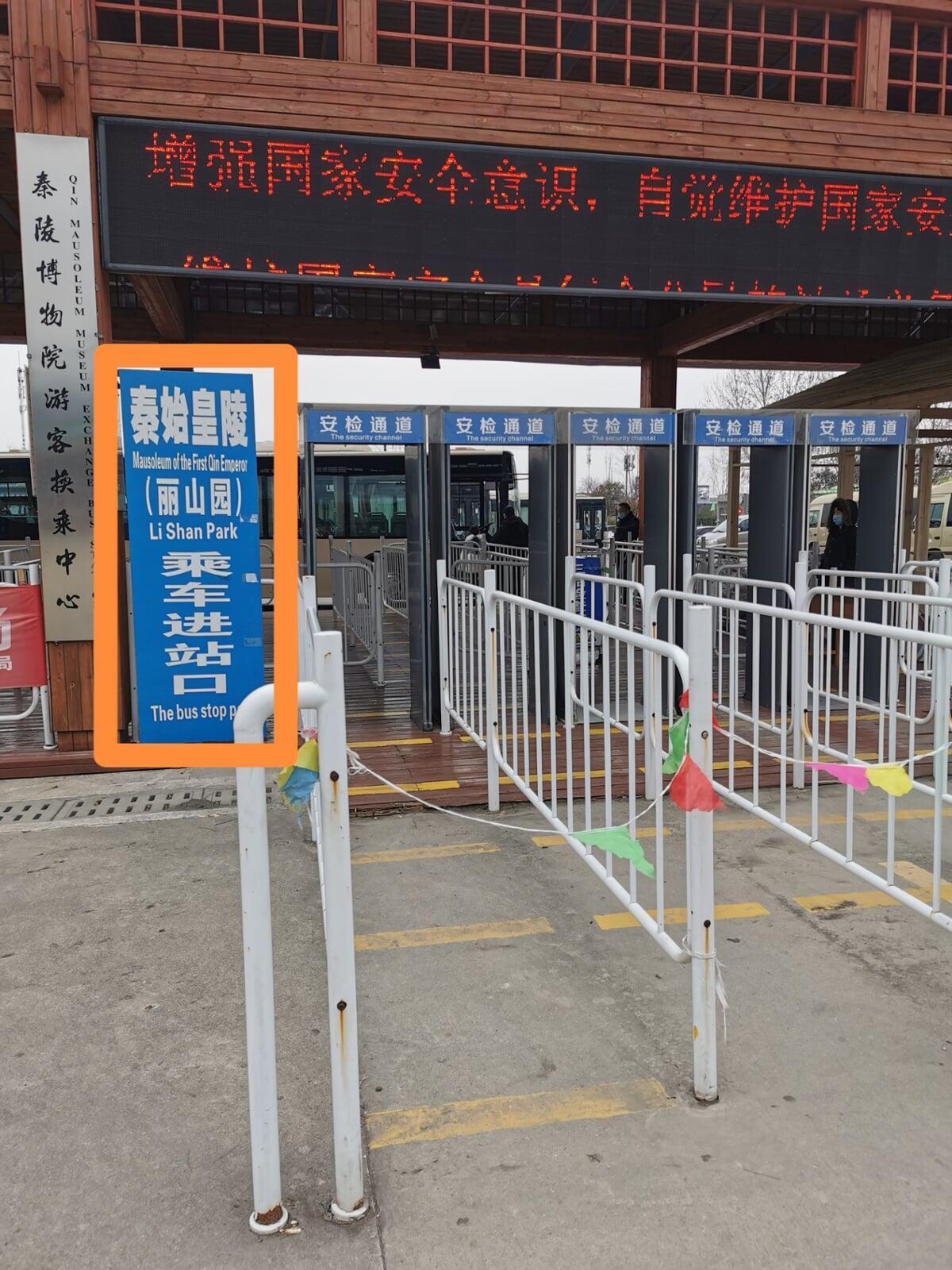
Li Shan Park is the official title for the Bronze Chariots spot.
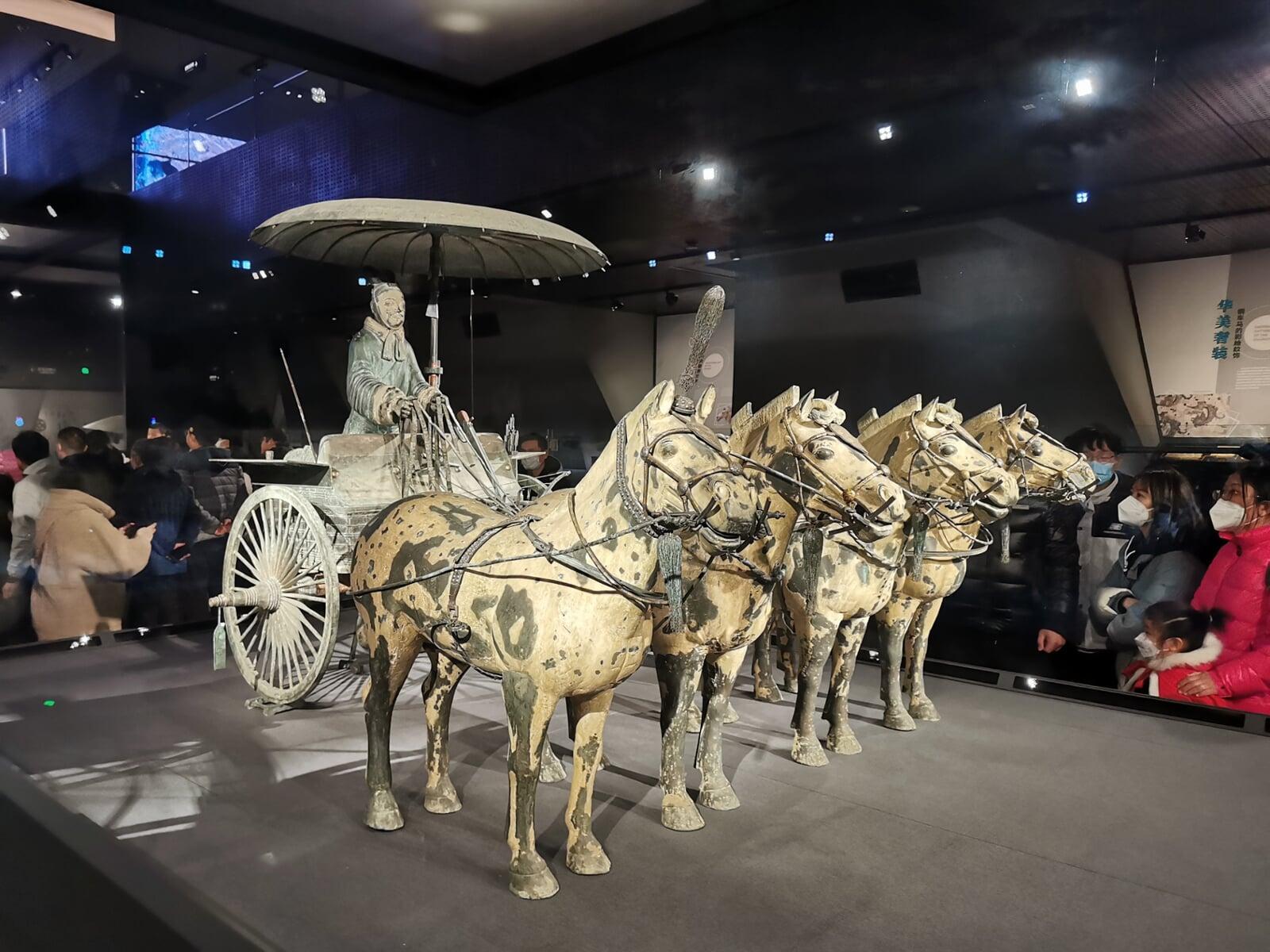
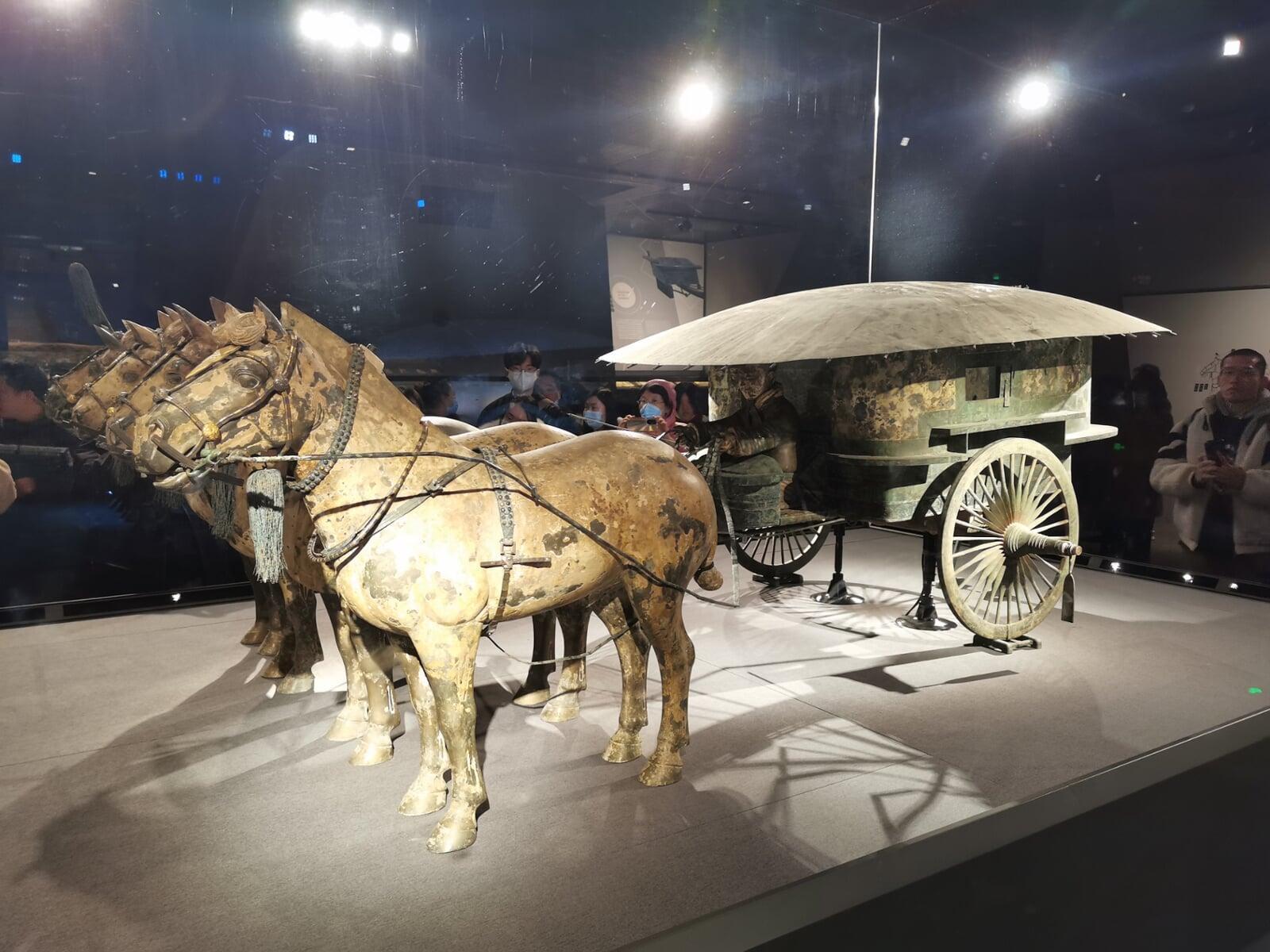
Exhibition of Bronze Chariots
Located 1.5 kilometers from the main Terracotta Warriors Museum, the exhibition of bronze chariots is an essential expansion of your Terracotta Army experience. This exhibit presents two full-sized bronze chariots, along with a collection of horses and other related artifacts, meticulously restored and displayed in a specially designed hall within the Emperor’s Mausoleum complex.
These stunning bronze chariots, dating back over 2,200 years, were part of the grand burial equipment intended for the first Emperor, Qin Shi Huang. The craftsmanship displayed in these artifacts demonstrates remarkable engineering and artistry, with each component showcasing intricate details—from the ornate designs on the wheels to the skilled assembly of the chariot parts.
Visitors will appreciate the significance of these chariots, not only as symbols of imperial power but also as representations of the luxurious life and advanced technology of the Qin dynasty. Informative signage accompanies the exhibit, detailing the methods used to create these artifacts and their historical context, enhancing the overall educational experience.
While many visitors focus primarily on the three pits, a visit to the bronze chariots allows for a comprehensive understanding of the ancient practices surrounding burial and the afterlife beliefs of the time. This last section beautifully ties together the themes of military power, craftsmanship, and the quest for immortality that permeate the entire Terracotta Warriors experience.